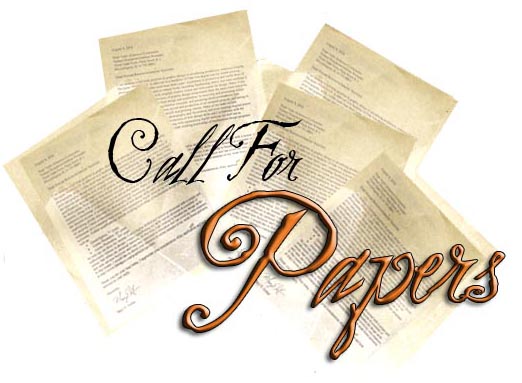|
News & Events |

|
|
IRSS Citation Report |
|
|
All |
Since 2025 |
|
Citation |
919 |
70 |
|
h-index |
15 |
01 |
|
i10-index |
22 |
01 |
|
|
Hit Counter |
|
|
|
Academy Publication
Ethics |

|
|
Academy of IRMBR
Volume 2, October, 2014
Move your mouse curser on the title to view the abstract of the paper
|
S.No. |
Title |
Authors |
Pages |
Download
|
| 1 |
Usage of Mystic Poetry As A Tool For Social Harmony: A Case of Baba Fareeds Mystic Poetry and Social Harmony
With the social unrest in the world and especially in Pakistan, the Islamic elements in general and Sufism in particular can play a decisive role to nourish peace and harmony in the society. This study intends to determine the impact of various social elements on Qawali and Sufiana Kalaam and finally check the ultimate effect of these two variables on social harmony in Pakistan. This study is of first kind in its nature to investigate usage of Sufism as a tool for Social harmony in Pakistan. The study has used mixed methodology approach to explore the research problem. A focus group discussion of 12 members was conducted for the purpose of specifying the variables of Mystic Poetry to be considered for further investigation. Thematic analysis based on findings of focus group discussion was carried out and themes were developed which were finally converted into questions. Based on these questions, a questionnaire as a research instrument was developed. For further investigation, stratified random sampling and selfadministered questionnaire based on 5-point Likert scale were used to collect views of the general public. Structural Equation Modeling (SEM), model fitness indices, reliability statistics and descriptive statistics were used to illustrate and analyze the collected data. Findings of study revealed that Love with Allah and His Beloved Prophet Muhammad (Peace be Upon Him), self-realization and justice have strong impact on mediating variables i.e. Qawali and Sufiana Kalaam. Conversely, distribution of wealth and simplicity weakly determine the mediating variables. Qawali and Sufuiana Kalaam strongly mediate the relationship between independent variables and social harmony. And, it is strongly recommended that Qawali and Sufiana Kalaam can be used as tools to create social harmony in society. The insufficient sample, confined area impose limitations on the generalizability of findings.
Key Word: Sufism, Social Unrest, Qawali, Kalaam, Self-Realization, Simplicity, Harmony, Wealth.
|
RAJA IRFAN SABIR, NABILA NOOR, BINESH SARWAR, NAEEM AKHTAR and USMAN ZAKIR |
387-404 |
Details
(578)
|
| 2 |
ESL Teachers Concurrent Verbal Protocol in the Use of Three Scoring Methods for Classroom-Based Assessment of Direct Writing in Malaysian Secondary Schools
Forty-five ESL teachers assessed three types of direct writing: essay writing, summary writing and guided writing, which were written by Malaysian secondary school ESL students. The ESL teachers used three scoring methods: holistic scoring method, analytic scoring method and primary trait scoring method to assess the students’ writing. The ESL teachers’ verbal responses about the scoring methods that they used to assess their students’ writing were recorded and analyzed. The teachers’ verbal responses revealed the strengths and weaknesses of each scoring method. The verbal responses also showed that the three scoring methods were suitable for classroom-based assessment of the three types of direct writing. Key Word: Classroom-Based Assessment, Direct Writing, Essay Writing, Summary Writing, Guided Writing, ESL Teachers, Holistic Scoring Method, Analytic Scoring Method, Primary Trait Scoring Method.
|
NORMAH BINTI OTHMAN |
405-421 |
Details
(621)
|
| 3 |
Does Senior High School Elective Mathematics Knowledge Matter in Pursuing University Business Programs? The Case of University for Development Studies Business School
The general purpose of this work is to investigate whether the differences in students’ mathematics knowledge really matter in the performance of some of the elementary courses (Economics, Accounting and Management) in business studies at the tertiary level. This has become necessary because some business schools in the public universities are now demanding elective mathematics as additional requirement to pursue some business programs. The study employed quantitative research design. It is because the objective is to obtain information which can be analysed and patterns extracted and comparisons made between students with Core Mathematics and Elective Mathematics knowledge on their performance in the university business programs. The results show that apart from Accounting that indicates a significant difference in performance between Elective and Core mathematics students by the test statistic, students’ performance in Economics and Management was indifferent in relation to students Core and Elective knowledge. This indicates that one does not necessarily need to take Elective Mathematics course to extraordinarily perform in Economics and Management at the university.
Key Word: SHS, Elective Mathematics, Knowledge, Business Programs.
|
BAWUAH BENARD, YAKUBU AWUDU SARE and ATAMI EMMANUEL BATESIMA |
422-433 |
Details
(480)
|
| 4 |
The Best Communication Tools in Delivering Landslide Information to Orang Asli: A Case Study in Gerik Perak, Malaysia.
Orang Asli are among those who are directly affected by landslides. This is due to their way of life practiced since generations where they prefer to live in jungle and highland areas. Landslide tragedies at Post Dipang Orang Asli Settlement and Sungai Ruil Orang Asli Settlement did not only destroyed their settlements but also claimed many lives. Efforts have been made to provide landslides information and awareness to Orang Asli through variety of communication tools. But, is the information conveyed to them effective? In order to answer this question, this study examined the most effective communication tools that can be used to deliver landslide information to Orang Asli. Such knowledge is necessary to ensure that the information reaches the intended audience. The findings of this study demonstrate that the mass media particularly newspapers and television are the most effective communication tools that can be used to disseminate landslide information to Orang Asli.
Key Word: Landslide, Information, Awareness, Orang Asli, Communication Tools, Malaysia.
|
JAMILAH AHMAD and HABIBAH LATEH |
434-446 |
Details
(587)
|
| 5 |
Leadership and Personality Influence on Creativity
Creativity is a pertinent agenda in ensuring the success of an organisation in the face of stiff global competition. Creativity is a trait that can be instilled within an individual, other than occurring naturally. In a person, creativity can result from the interaction between two factors, namely situational factor (external factors to the individual) and person factor (internal factors of the individual). This research focuses on the influence of work design on creativity among workers. Additionally, this study also looked at the influence of leadership moderator (one of the situational factors) and personality (a person factor), toward the relationship between work design and creativity among workers. A total of 158 respondents answered the questionnaire given in this cross-sectional study. Results from the correlational and regression analyses showed that work design has a significant relationship with creativity. Also, results from the hierarchical regression analysis revealed that the personality factor has a stronger moderating effect as compared to the leadership factor toward the relationship between work design and creativity. This shows that the person factor gives a greater effect as compared to the situational factors for forming creativity. Based on the results of this research, several management actions are recommended for enhancing creativity amongst employees at the workplace. In addition, theoretical implications were also discussed in view of the research limitations which were observed. At the end of this paper, future research directions are also presented.
Key Word: Creativity; Work Design, Leadership; Personality, Performance.
|
SABARANI GHAZALI, HUSNA JOHARI and ABDUL AZIZ OTHMAN |
447-456 |
Details
(525)
|
| 6 |
Kite Flying: A Unique But Dangerous Mode of Injuries In Pakistan
The aim of this study is to discuss the history of kite flying in indo-Pak sub continent on the basis of news reports also explore the festival causes and human loses bear by the Pakistan. All data collection and analysis with the help of news reports.
Key Word: Basent Festival, Manjha, Kite Flying, Human Loses.
|
RAJA IRFAN SABIR, HASEEBA IJAZ, NAEEM AKHTAR, USMAN ZAKIR, SOMIA YASEEN and UZMA |
457-463 |
Details
(596)
|
|





